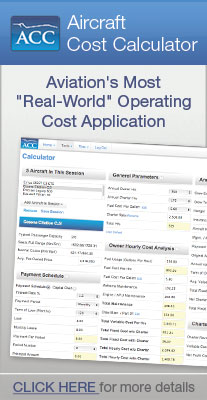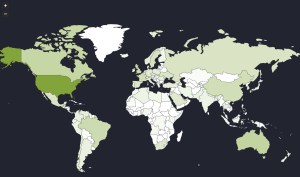Podcast: Play in new window | Download
What’s it cost? This is almost always the first question in business aviation. But, it’s the wrong first question.
Instead, first ask “what costs are important?” This is quality planning discussed in episode 47. Identifying the important costs (metrics) first means straighter path, less surprises, better quality control later.
To help understand important costs, we welcome back to the show Chris Doerr. He joined us back in episode 15 and is founder of the Aircraft Cost Calculator and he’s here today to help us answer…
What costs are important?
Acquisition
Purchase price is the known factor… pre-flown (used) or brand new. But, the important question to ask is, “what does the aircraft cost to operate?” (vs. buy). Chris discusses spending less money buying an older aircraft (with potentially higher operating costs) vs. spending more on a newer aircraft (with potentially lower operating costs).
Fuel
Consider fuel one of the top four important aircraft costs after capital cost, residual value, and labor. Here, fuel consumption matters – how much fuel does the asset require per hour or trip? While fuel pricing is relatively uncontrollable outside of contract deals or tankering activities, choosing fuel-efficient business aircraft can dramatically influence operating costs. Ask, “how much does the bird burn?”
Warranty
New aircraft come with a warranty – typically defined by calendar time and/or flight hours. Here’s what this means: when something expensive breaks (and everything on a business jet is expensive), a warranty kicks in to transfer the risk from you to the manufacturer. At 14:00 into the show, Chris gives a real world warranty success story… where the warranty covered a $100,000 aircraft computer problem.
Maintenance Programs
This is insurance, sort of. Each manufacturer, and a few after-market providers, offer component protection during use. For example, if you fly 300 hours per year, you might pay $400/hour/engine to cover power plant part failures and $100/hour to cover auxiliary power unit problems. This $900/hour cost (assuming two-engine aircraft) provides a smoother financial ride in the maintenance cost column. It’s peace of mind should something break.
Important note: Maintenance programs matter when it comes time to sell the aircraft. Often, when two similar business jets are on the market, the aircraft that has been on a maintenance program will retain more value vs. an aircraft that has not been on a maintenance program. We’re talking a potential $1MM to $2MM difference!
Consider New vs. Old Aircraft
Again, newer aircraft will typically be less expensive to operate from a variable-cost perspective (fuel, warranty, maintenance program). But, the fixed costs can actually be higher. For instance, more expensive aircraft = more expensive insurance (one fixed cost) and more expensive crew training (another fixed cost).
Chris covers new vs. old business jet costs in this article… showing how you can operate an older aircraft (Cessna Citation 3) at a significantly lower cost per hour than a newer aircraft (Cessna Citation XLS).
It’s not just acquisition cost. Nope… Chris delves into residual cost and loan cost, too.
Bullet points like these are literally the tip, of the tip of the cost ice burg. When the important questions are asked and answered, the line item issues get less complicated. The Aircraft Cost Calculator covers these important costs so you reduce financial risk and increase ROI value.
Mentioned in the Show
Article: New vs. Pre-Owned Business Aircraft
Your Opinion?
What business aircraft costs are important to you? Share your feedback below, or with me directly here.
Subscribe in iTunes | Give an iTunes Rating (here’s how)





